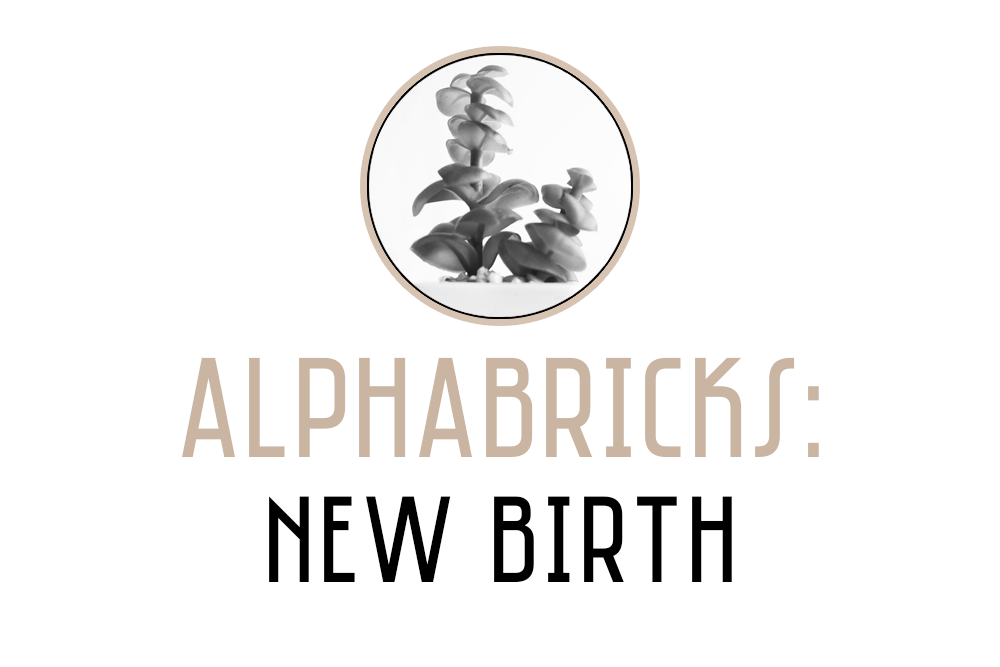Snap Shot
Jesus made it plain that night in Jerusalem as to just how to be a part of His eternal kingdom. In response to Nicodemus’ comments,
“Jesus answered him, ‘Truly, truly, I say to you, unless one is born again he cannot see the kingdom of God’” (John 3:3 ESV).
Theologically Speaking
Earlier, in “Alphabricks: Three C’s of Salvation,” we learned that following conviction, contrition, and confession, conversion took place; that is, one experiencing and responding to the “C’s” to the end would experience a genuine born-again salvation experience.
And while we understood that it took the Holy Spirit to begin the process with conviction, ultimately it was a personal act to respond with an authentic and contrite confession that led to the personal conversion.
With the understanding that conversion refers to man’s response to God’s salvation offer, regeneration—the new birth, is completely God’s doing in making salvation a reality. According to Hodge’s Systematic Theology, the word regeneration is used almost universally to refer to the instantaneous change from spiritual death to spiritual life.
Thus, theologically speaking, regeneration is God’s work that results in individual salvation experiences; it is the spiritual transformation that brings a person from his inherited spiritually dead state to becoming spiritually alive in Christ.
As Moses
In explaining the new birth—regeneration—to Nicodemus, Jesus said,
“And as Moses lifted up the serpent in the wilderness, so must the Son of Man be lifted up, that whoever believes in him may have eternal life” (John 3:14-15 ESV).
A quick review of that historical event, well-known to a teacher of Israel like Nicodemus but not so relevant for the common man, is simple: fiery serpents went among the people and whoever was bitten by one died.
To remedy the situation, God instructed Moses to “make a fiery serpent and set it on a pole, and everyone who is bitten, when he sees it, shall live” (cf. Numbers 21:8).
It’s simple: once bitten, look to the pole and live. There was no work for an afflicted Israelite to physically do, all the work for his “salvation” (healing) was done by God’s work on the pole.
Look by faith in obedience and live; look away and die.
In the new birth, Jesus was telling Nicodemus that He was the fiery serpent placed on the pole for man’s salvation. Notice that the command to Moses was not to put a similitude of a dead man on the pole. Such a similitude would have focused on the effect of the serpent’s bite. Rather, Moses was to fashion and lift up the similitude of the cause for the bitten Israelite’s death. A cause that would ultimately become an illustration for what Jesus would do in saving man from his sin.
Just as the fiery serpent represented the cause for death, so did Jesus became sin—our cause for death—for us, as Paul would later pen:
“For our sake he [the Father] made him [the Son] to be sin who knew no sin, so that in him we might become the righteousness of God” (2 Corinthians 5:21 ESV).
The Regeneration Verse
Just as the “new birth” explanation is limited to just a single passage (although Peter does mention it in his first letter), the word regeneration with the idea of salvation only appears once as well:
“But when the goodness and loving kindness of God our Savior appeared, he saved us, not because of works done by us in righteousness, but according to his own mercy, by the washing of regeneration and renewal of the Holy Spirit, whom he poured out on us richly through Jesus Christ our Savior, so that being justified by his grace we might become heirs according to the hope of eternal life” (Titus 3:4-7 ESV).
And while the literal Greek term for regeneration used here is not found elsewhere in the New Testament, the idea of a new birth is certainly prominent throughout its 27 books.
Conclusion
The new birth—regeneration—is completely the work of God. There are no works one can do to be saved but to accept what the Lord Jesus has already done on the cross.



